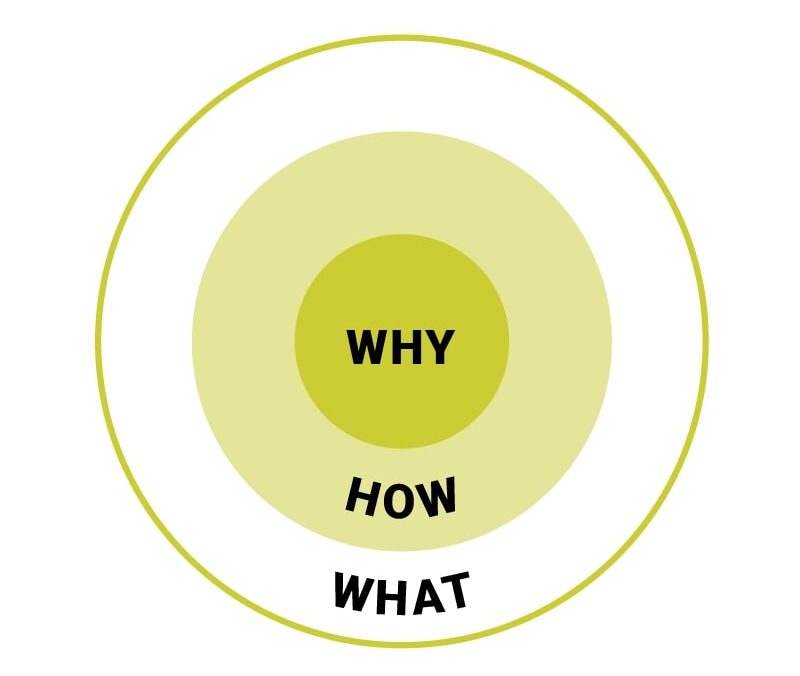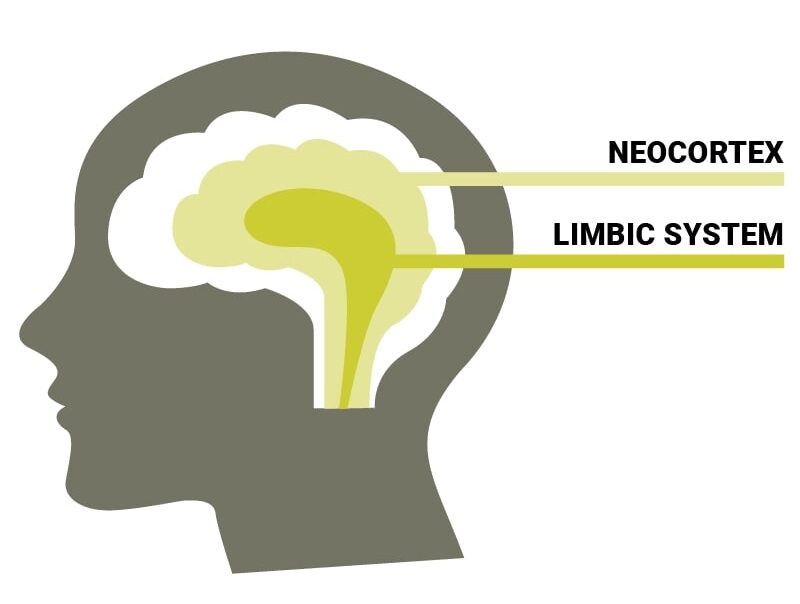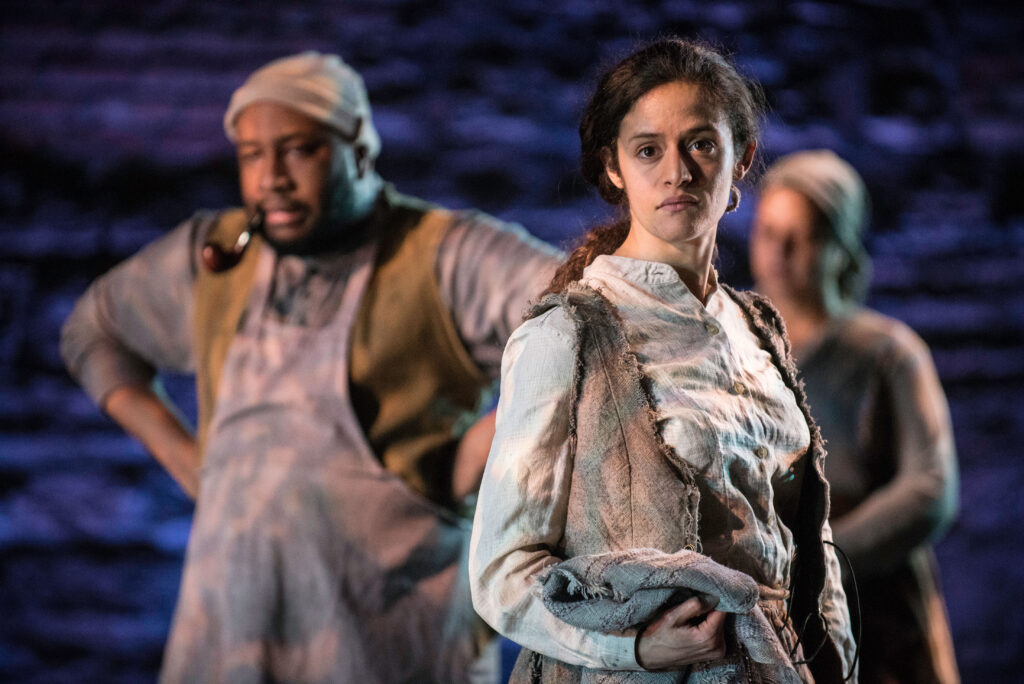Why is the WHY important?
The word WHY seems simple and obvious, but it often gets left out of the conversation. Organizations communicating about themselves tend to get hung up on WHAT they do more than WHY they do it.
Your core values and beliefs sit at the heart of your WHY. They are scientifically proven to be more likely to motivate your audience to take action to support your cause. People connect with you more deeply when they understand your purpose.

Break it down using the Golden Circle
Author and speaker Simon Sinek describes a simple way for others to use the philosophy outlined in his best-selling book Start with Why. He calls it the Golden Circle.
Sinek proves that the most successful campaigns aren’t dependent on design or product, but are related to how companies talk about their work. Companies that emphasize WHY they do the work they do inspire people to take action, whether that results in a purchase or in the case of arts organizations, a donation.
While your WHY is related to your mission and vision, your HOW is related to your values and WHAT makes you special or sets you apart from others who do something similar.
To build trust and confidence, start with the motivation behind the work (the WHY), then expand to explore HOW that vision is achieved through the work itself (WHAT).

A deep dive into the science of decision making
The Golden Circle works because it is based on what we know about how humans make decisions. The neocortex, on the outside part of the brain, is the most evolved part. It helps us reason, understand data, and use language, but oddly enough this part of the brain isn’t responsible for making decisions. The limbic system does that.
Our emotions (feelings like trust and loyalty) are what drive behavior and decision-making. The familiar feeling of “trusting your gut” or choosing what “feels right” is based in this inner part of our brain, the limbic system. The WHY and HOW sections are more compelling for creating these strong feelings that can drive action.
Let’s break it down further using the example of an arts organization
To illustrate how the Golden Circle can work for arts organizations, we’re going to try applying it to a performing arts venue, a theater. Let’s call our imaginary theater The PlayHouse.
-
Typical Approach
If we break it down from the outside in, which is a natural tendency, The PlayHouse would be described this way:
WHAT – The PlayHouse offers world-class performances of plays and musicals that celebrate the stories and history of the LGBTQ+ community.
HOW – The PlayHouse puts on interactive performances at its state of the art facility that help the audience feel a part of the production and offers post-performance talks with the cast and crew.
WHY – The PlayHouse believes in bringing together people of all backgrounds in order to create empathy, respect, and appreciation for the talents and stories of LGBTQ+ artists while raising awareness for LGBTQ+ issues.
-
Golden Circle Approach
Here’s what that story sounds like reversed and in alignment with the Golden Circle approach:
WHY – The PlayHouse believes in bringing together people of all backgrounds in order to create empathy, respect, and appreciation for the talents and stories of LGBTQ+ artists while raising awareness for LGBTQ+ issues.
HOW – The PlayHouse does all this by putting on interactive performances at its state of the art facility that help the audience feel a part of the production and offers post-performance talks with the cast and crew.
WHAT – World-class performances of plays and musicals that celebrate the stories and history of the LGBTQ+ community are what The PlayHouse does.
This small change can make all the difference, especially when trying to differentiate your organization from other organizations that are similar in what they offer and how they offer it.
See it in action
Curious how other organizations have started to identify their value to set themselves apart? Here are a variety of examples that show just how beautiful it can be to know and communicate the special qualities of an organization.
Upstream Arts
Upstream Arts uses the power of the creative arts (HOW) to activate and amplify the voice and choice of individuals with disabilities (WHY).

Pangea World Theater
Pangea illuminates the human condition, celebrates cultural differences, and promotes human rights (WHY) by creating and presenting international, multi-disciplinary theater (HOW).

Thunder Valley Community Development Corporation
Thunder Valley is building community power to be the architects of our own future (WHY) through Community Engagement, Ecosystem of Opportunity, Triple Bottom Line, Equity, and Place-based opportunities (HOW).

Try it for yourself
Are you feeling inspired? It’s time to try it out using our worksheet.
PDF Word Document-
1
Gather key folks
Gather a group from across your organization to do this work together. Diversity in this group supports a more powerful and equitable outcome.
-
2
Craft a WHY statement with your team
Take your time. Meet with your board and team to discuss what motivates your work. Why do you show up? Why should others care? Why? The goal of this step is to have a clear and succinct statement of WHY.
-
3
Identify your HOW with your team
Next, take some time to discuss how you approach your work. This may be related to your values, or what sets you apart from others.
-
4
Name WHAT you do
Finally (and hopefully the easiest part of this exercise), list what your organization does. What products and services do you offer? What are your channels or areas of work? Are these consistent with your WHY and your HOW?
-
5
Put your WHY into action!
Reflect on the connection between the WHY, HOW, and WHAT. Are they balanced and in relationship with each other?
You can communicate your WHY with everything you say and do.
- Tie it into your value-based messaging!
- Use this structure as the basis of your next donor letter!
- Add your WHY to a speech from the stage!
- Use it while involved in strategy work, maybe adding it to your hedgehog, your strategy roadmap, and your strategy screen
While this post talks about finding your organization’s WHY, you can also use this tool to better understand and communicate your programs. Or, you can help focus your own energies and live with passion and purpose by finding your own personal WHY.
